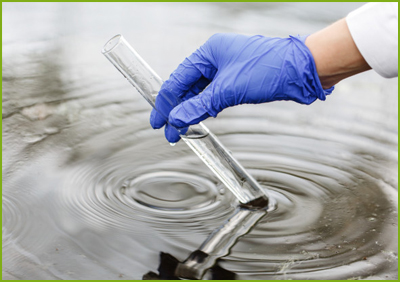Water Testing
Water testing is a broad description for various procedures used to analyze water quality. Millions of water quality tests are carried out daily to fulfill regulatory requirements and to maintain safety
Testing may be performed to evaluate:ambient or environmental water quality – the ability of a surface water body to support aquatic life as an ecosystem.
Freshwater environmental quality parameters and Bioindicator.

Wastewater – characteristics of polluted water (domestic sewage or industrial waste) before treatment or after treatment
- Construction water
- Drinking water
- Ground water
- Industrial water
- Waste Water (Effluents / Sewage)
- Irrigation water
- Packaged drinking water
- Surface water
- Swimming pool water
- Water From purifiers
- Water Distilled / dematerialized water
- Packaged Natural mineral water
- Water for Construction purpose
- Water for industrial purpose
- Water for medicinal purpose
- Water for processed food industry
- others
Residues in Water
National governments introduced residue limits and guideline levels for pesticide residues in water when policies were implemented to minimize the contamination of ground and surface waters. Initially, the main attention was given to drinking water.
Regulatory limits for pesticide residues in waters should have the following characteristics: definition of the type of water, definition of the residue, a suitable analytical method for the residues, and explanation for the basis for each limit.
- Trace metal elements
- Halogenated hydrocarbons
- Pesticides
- Phenol
- Poly chlorinated Biphenyl
- Polycyclic aromatic hydrocarbons
- Polyhalogenated biphenyls
- Chlorinated dioxins & dibenzofurans
- Others
